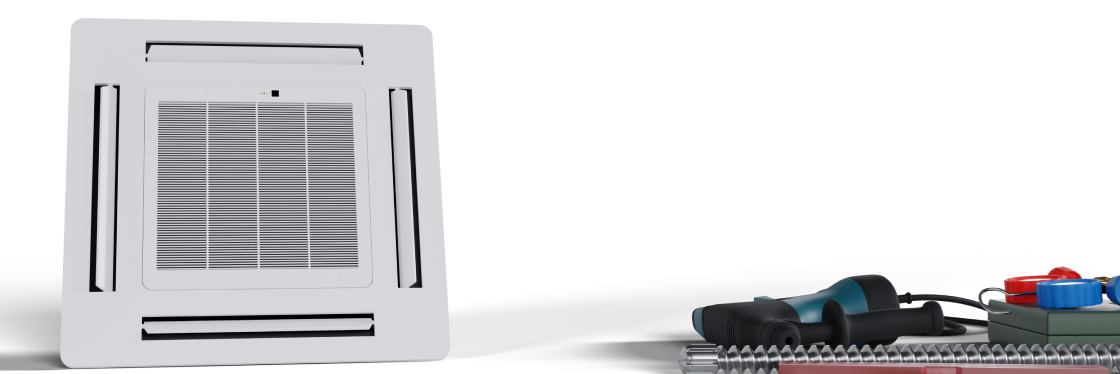Cassette AC vs Split AC: Which Is Better for Your Home in India?
Cassette AC vs Split AC: Table of Contents
- 1. What is a Cassette AC?
- 2. What is a Split AC?
- 3. Cassette AC vs Split AC: Head-to-Head Comparison
- 4. Pros and Cons
- 5. How to Choose: Key Tips & Scenarios
- 6. Frequently Asked Questions (FAQ)
- 7. Authoritative External Links
What is a Cassette AC?
A cassette AC is a type of air conditioner that is mounted flush to the ceiling, often inside a false ceiling. The visible part is typically just the grille. The powerful fans push cool air in four directions, delivering even distribution across the room—perfect for larger or commercial spaces.
What is a Split AC?
A split AC consists of two main units: an indoor unit (mounted on the wall) and an outdoor compressor unit. The indoor unit blows cool air in one direction, efficiently cooling small to medium rooms, and is a very popular choice for Indian homes.
Cassette AC vs Split AC: Head-to-Head Comparison
| Feature | Cassette AC | Split AC |
|---|---|---|
| Installation | Ceiling-mounted (requires false ceiling) | Wall-mounted (easy, no ceiling work needed) |
| Airflow | 360° even, quick cooling | Focused, best for a single spot/zone in room |
| Best For | Large rooms, offices, open halls | Small to medium rooms, bedrooms, living rooms |
| Energy Efficiency | Good, but generally less than split AC in home usage | Excellent, up to 65% energy savings in some models |
| Aesthetics | Unobtrusive, frees wall space | Sleek, modern, visible on wall |
| Noise | Very quiet (compressor outside, air fans inside ceiling) | Quiet (outdoor unit houses compressor, minimal indoor noise) |
| Maintenance | Slightly trickier (ceiling access) | Easier (wall access) |
| Installation Cost/Complexity | Higher (requires specialist, ceiling work) | Lower (standard AC installer) |
| Suitability for Homes | Best for large drawing rooms, luxury homes | Ideal for typical Indian flats, bedrooms, and offices |
| Price | Usually higher (unit and installation) | Generally more affordable options available |
Pros and Cons
Cassette AC: Pros
Uniform cooling in all corners
Ceiling installation saves wall space
Blends in with decor, near-invisible
Quieter operation—no indoor compressor noise
Great for large, open-plan areas
Cassette AC: Cons
Installation cost is usually higher
Needs a false ceiling (not always possible in old homes)
Maintenance can need a ladder/ceiling access
Split AC: Pros
Cheaper and easier to install
Energy efficient—good for long term savings
Great air quality (with air purification filters)
Easy maintenance (most can be cleaned from the wall itself)
Flexible placement options for bedrooms, hall, study etc.
Split AC: Cons
Focused airflow—may have hot spots in large rooms
Needs wall space for the indoor unit
Slightly visible on the wall (though most are sleek and compact)
How to Choose: Key Tips & Scenarios
Choose Cassette AC if:
You have a large room (bigger than 300sqft), open hall, or want uniform cooling everywhere without bulky wall units. Especially good if you’re designing new interiors with a false ceiling in mind.Choose Split AC if:
You have standard-sized rooms (bedroom, living, study), need easy maintenance, top energy savings, and want a wide price range. Perfect for Indian flats and independent floor homes.
Actionable Tips
For maximum electricity savings, look for inverter split ACs.
In a large drawing room, combine a cassette AC with regular fans for best effect.
Always get ACs installed by professionals for safety and warranty protection.
Clean the filters monthly for better cooling and efficiency.
For homes with no false ceiling, split AC is usually the go-to option.
FAQ: Cassette AC vs Split AC
Q1: Is cassette AC more powerful than split AC?
A1: Cassette ACs cool larger spaces more uniformly and quickly, but split ACs are energy efficient and effective for small/medium rooms.
Q2: Which AC is easier to maintain?
A2: Split ACs are easier to maintain, as the filters and units are more accessible. Cassette units may require ceiling access for filter changes.
Q3: Is a split AC noisy?
A3: No, split ACs are designed for quiet indoor operation. The main noise comes from the outdoor compressor, so bedrooms and living rooms stay peaceful.
Q4: Does cassette AC need a false ceiling?
A4: Yes, cassette ACs typically need a false ceiling or ceiling cavity for installation.
Q5: What’s best for a standard Indian home?
A5: For most Indian homes, a split AC is best due to flexible installation, cost-effectiveness, and energy efficiency—unless you have a large open space or specific aesthetic/space-saving needs.
